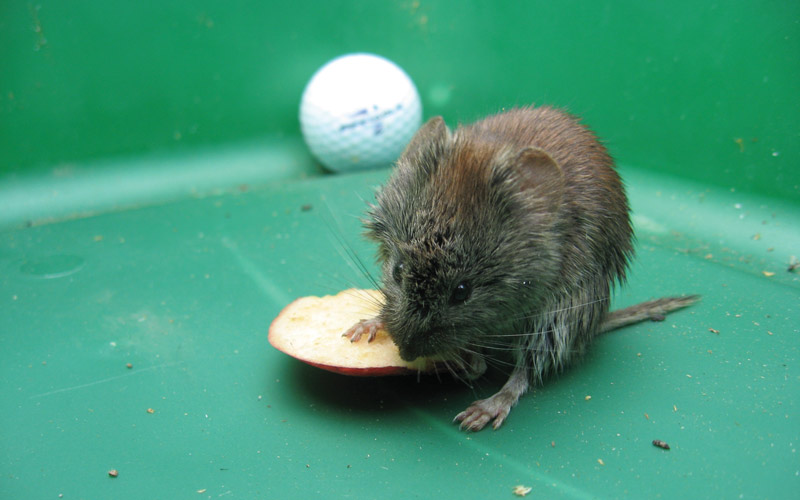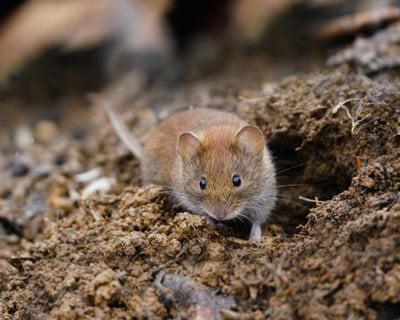Efficient Vole Control Solutions: Protect Your Property Today!
Wiki Article
Grasping Vole Parasite Control: In-depth Insights on Problem Avoidance and Treatment Strategies
By recognizing the subtle signs of vole infestation early on, we can take proactive procedures to protect against extensive damages. In this discussion, we will discover the subtleties of vole habits, delve right into the recognition of problem signs, and discover the most reliable prevention and therapy techniques.Recognizing Vole Habits
Analyzing the foraging patterns of voles uses important insights right into their actions and habitat preferences. Voles, tiny rats appearing like mice, are herbivores understood for their underground tunneling tasks. By observing their foraging behavior, scientists can get a better understanding of where voles like to develop their habitats and the degree of their environmental impact. Voles are prolific breeders, with a single female with the ability of creating numerous trashes in a year, making it important to comprehend their habits for efficient parasite control approaches.
Study indicates that voles display selective feeding routines, liking seeds, origins, and roots - vole lawn damage. This dietary choice affects their foraging patterns, leading them to locations rich in plant life and ground cover. Additionally, voles are understood to develop sophisticated tunnel systems for foraging and nesting functions, indicating a high degree of flexibility to their environments
Understanding vole actions is necessary for executing targeted bug control measures that interrupt their habitat preferences and foraging tasks. By examining their habits, professionals can establish extra effective avoidance and therapy strategies to manage vole invasions.
Identifying Signs of Vole Problem
Vole problems can be found by acknowledging details signs of their presence in a location. Among the most typical indications of a vole infestation is the presence of surface area paths. Voles produce networks of slim pathways on the ground that are typically about 2 inches vast. These paths are often located in verdant locations or under compost or ground cover where voles can move easily and look for food.One more crucial sign of vole invasion is the visibility of tiny burrow openings in the ground. Additionally, voles are recognized to leave behind eaten plant stems, roots, and bulbs near their burrow openings, suggesting their feeding activity in the location.
Locating these droppings along runways or near burrow openings can confirm a vole infestation. By being cautious for these indicators, residential property owners can promptly resolve vole invasions and avoid further damages.
Executing Proactive Avoidance Steps
To effectively alleviate the risks linked with vole invasions, residential property owners can proactively apply a variety of preventative steps intended at securing their landscapes and gardens. Additionally, maintaining garden locations tidy and reducing clutter where voles might hide or nest is important in lowering their visibility.Additionally, using natural vole deterrents like castor oil-based repellents or predator urine can work as effective preventative measures. It is also advisable to frequently inspect outside spaces for any kind of indicators of vole activity, such as paths or delve openings, to resolve prospective invasions quickly. By taking on these proactive avoidance methods, homeowner can substantially lower the probability of vole damages and maintain the health and visual appeals of their landscapes.
Effective Treatment Approaches
Integrating targeted capturing approaches and using accepted rodenticides are vital components of effective treatment techniques for managing vole problems. Trapping can be a reliable method to minimize vole populations, specifically when placed tactically in their active paths. Break traps and live traps can both be efficient, with the last enabling for the capture and relocation of voles. When making use of rodenticides, it is critical to follow safety and security guidelines to stop damage to non-target pets and pets. Place rodenticides in secure bait stations to reduce risks to unexpected targets. Additionally, environment adjustment, such as reducing ground cover and eliminating sources of food, can aid deter voles from infesting a location. Regular monitoring and maintenance are likewise key facets of successful treatment techniques to make sure that vole populations are maintained under control. By incorporating trapping, rodenticides, environment modification, and regular tracking, efficient vole parasite control can be accomplished.
Monitoring and Upkeep Tips
Keeping an organized routine for tracking and performing routine maintenance tasks is critical to sustain the performance of vole bug control actions. Routine monitoring permits the very early detection of vole task, enabling prompt treatment prior to infestations worsen. To efficiently monitor vole populations, purposefully put catches can be utilized in vole paths or near burrow entries. By consistently examining these traps, homeowner can gauge the extent of vole activity and readjust control techniques accordingly.Additionally, keeping a tidy and well-kept landscape is important in vole avoidance. Clearing away particles, such as stacks of timber or thick vegetation, gets rid of possible vole environments. Consistently cutting and mowing yards plant life aids minimize vole concealing spots and lessens their access to food resources.

Verdict
To conclude, mastering vole pest control requires a strong understanding of vole actions, the capacity to determine signs of infestation, carrying out positive avoidance procedures, efficient therapy techniques, and constant surveillance and upkeep. By taking a thorough approach to vole control, individuals can efficiently take care of and prevent problems, inevitably safeguarding their home and surrounding environment from damage brought on by these small rodents.In this conversation, we will explore the nuances of vole habits, delve right into the recognition of infestation indicators, and discover the most effective avoidance and treatment methods.Incorporating targeted capturing approaches and making use of authorized rodenticides are necessary parts of effective treatment strategies for taking care of vole invasions. To efficiently check vole populations, purposefully put catches can be made use of in vole runways or near vole control utah burrow entryways. Inspecting and fixing any kind of damages to these frameworks makes sure that vole control remains efficient in safeguarding properties from problems. By including these monitoring and upkeep techniques right into a detailed vole pest control strategy, individuals can efficiently take care of vole populaces and secure their buildings from damages.
Report this wiki page